By Kaushik Sarkar and Ashwin Viswanathan
Presented here is an easy guide to help identify the four most common Swallow species in India. You can also download just the photographic guide to this article: PDF format (345 KB).
In India, there are 15 species of swallows and martins, many of which look similar. Red-rumped Swallow, Barn Swallow, Streak-throated Swallow and Wire-tailed Swallow are perhaps the most common of these and are distributed in most of the country. Among these, Red-rumped, Wire-tailed and Streak-throated Swallow are largely resident but Barn Swallow is a winter visitor to most of the country and breeds only in the Himalayas within the region.
Step 1 to identifying these Swallow species – a swallow seen outside the Himalayas during summer/monsoon is unlikely to be a Barn Swallow!
But let’s begin by looking at some features that these swallows have in common. All four swallows have a bluish body and a pale to white belly. All of them have some red on the body: either on the forehead, crown, nape, throat or rump. Red-rumped, Barn and Wire-tailed Swallow have extended outermost tail feathers called tail streamers (may not be visible in moulting/non-adult birds) that can be very long in both Barn and Wire-tailed. So Wire-tailed Swallow is not the only swallow to have ‘wires’ in the tail!
We either see swallows sitting on a perch, usually on electric lines, or flying up in the sky. A swallow that is perching can be identified using signs and tricks that are different from those that you can use to identify flying swallows.
What is that swallow on the wire?
Swallows sitting on electric wires is a common sight at wetlands in India. Many species often sit together but identifying each one is fairly straightforward by looking at a combination of its crown, throat and rump. Size and markings on the face can also be indicative.
Adult Red-rumped Swallow and Barn Swallow have bluish crowns whereas Streak-throated and Wire-tailed Swallow have reddish crowns.
Red-rumped vs. Barn Swallow: Red-rumped has a lightly streaked to plain throat whereas Barn Swallow has a dark throat (red/black)! Red-rumped also has red on the face (cheeks) and a red rump that Barn Swallow lacks.
Streak-throated vs. Wire-tailed Swallow: Streak-throated has a well-streaked throat (that often appears dark) and a lightly streaked breast whereas Wire-tailed has a fully white throat and underparts.
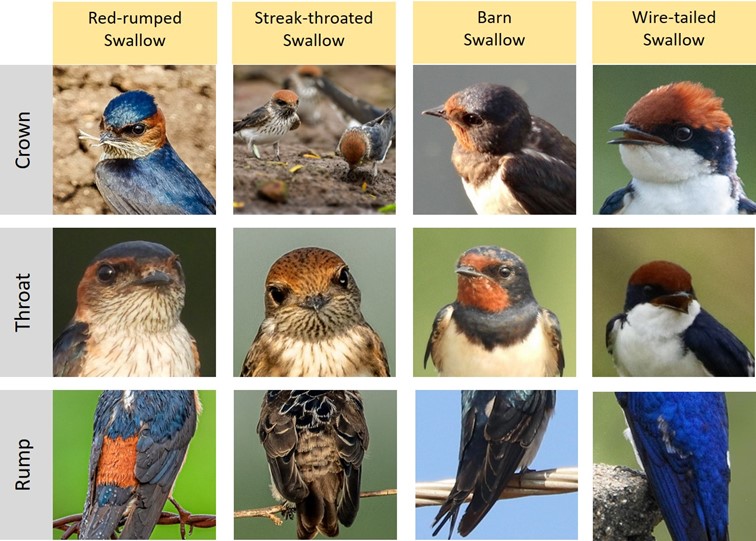
Comparative panels for different features of Swallows: All images © Lakshmikant Neve (2), Hiren Khambyata, Aseem Borkar, Arvind Khanna, Vivek Saggar (2), Nishad Eshaal, Bhaarat Vyas, Srinivas Mallela, Srinivas S, Afsar Nayakkan and Macaulay Library
Streak-throated is also a smaller swallow than the rest.
DO NOT IDENTIFY SWALLOWS BY THE PRESENCE OF TAIL STREAMERS! Wire-tailed Swallow is not the only swallow to be ‘wire-tailed’! Both Barn and Wire-tailed Swallow can lack tail streamers when growing feathers (moulting), or when they are juveniles.
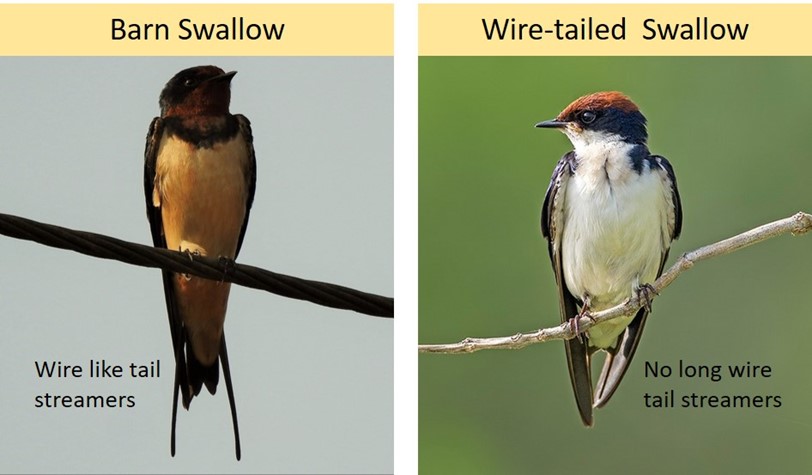
Tail streamers comparison between Barn Swallow and Wire-tailed Swallow. Images © Arulvelan Thillainayagam (L), Arijit Banerjee (R) and Macaulay Library
Juvenile/immature swallows may not show any of the previously discussed features. Barn Swallow juveniles are distinctive because they show a prominent dark breast band, even if they do not show fully dark throats like adults. Wire-tailed will have fully white underparts even at this age (without a breast band and any hint of streaking) and a pale crown. Both Streak-throated and Red-rumped Swallow can show streaks on the throat but even young Streak-throated will show a pale reddish crown. Red-rumped Swallow juveniles have a whitish rather than red rump.
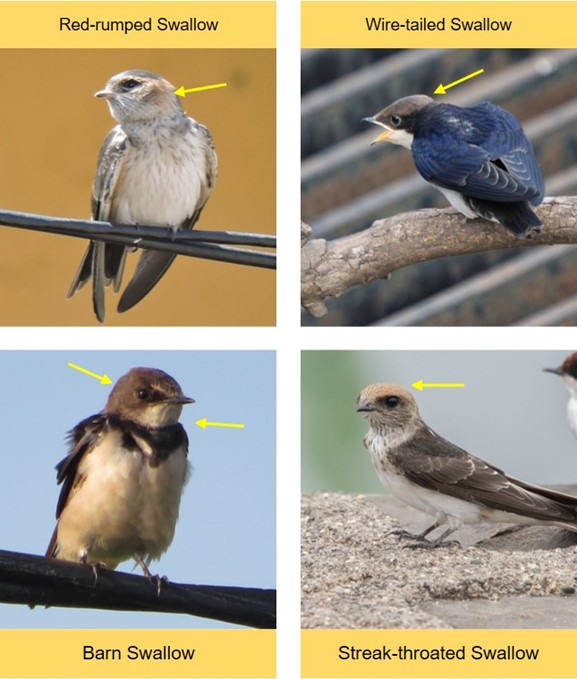
Immature/juveniles. All images (clockwise from top left) © Mohammad Anesh Khira, Lalit Mohan Bansal, Shuvendu Das, Kalpesh Krishna and Macaulay Library.
Red-rumped Swallow can also have a streaked throat and STREAK-THROATED SWALLOW IS NOT THE ONLY SWALLOW THAT CAN HAVE A STREAKED THROAT!
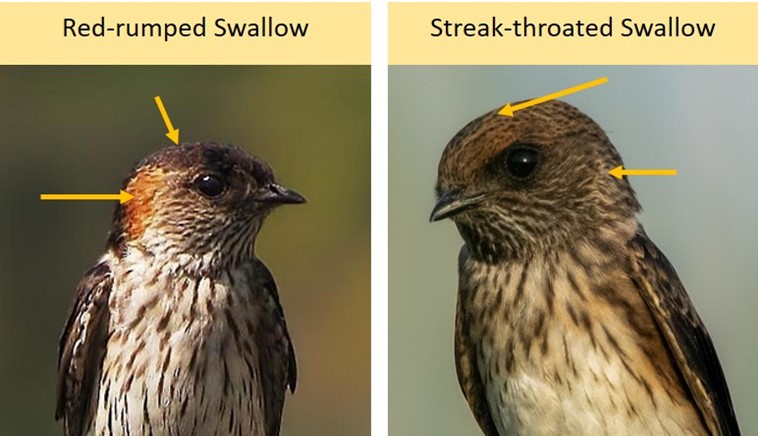
Streaked throats compared between Red-rumped and Streak-throated Swallow. Note the slight reddish tinge to the crown of Streak-throated and bluish crown and ‘ear’ of Red-rumped. Images © Ragoo Rao (L), Vivek Saggar (R) and Macaulay Library
What is that swallow in flight?
What do we do when a swallow is not conveniently sitting? We most often see them flying above our heads, sometimes very high up! The colour of the crown, rump, face, etc. are no longer visible and can no longer be used for identification!
Swallows in flight can be identified through a combination of the size and structure, tail shape and the colour of their underparts.
Streak-throated Swallow is structurally different from the others, resembling a Riparia Martin (eg. Grey-throated Martin) in shape and size. It is smaller and more compact than the other three swallows and is relatively easy to pick out just from the smaller size and barely forked tail.
Streak-throated juveniles are often confused with Grey-throated Martin. But lookout for some hint of a reddish tinge on the crown that can direct you towards Streak-throated!
Red-rumped, Barn and Wire-tailed Swallow can all look similar in flight. A dark throat and breast immediately suggests Barn Swallow. Striking white underparts and a nearly square tail (excluding the streamers) indicates Wire-tailed. A particularly long black tail extending beyond the vent and the end forming a gentle ‘U’ with the tail streamers (see image) is diagnostic of Red-rumped Swallow. Barn and Wire-tailed have streamers extending beyond the tail at the vent rather than well beyond with Red-rumped Swallow. Red-rumped therefore looks more elongated than the other swallows.
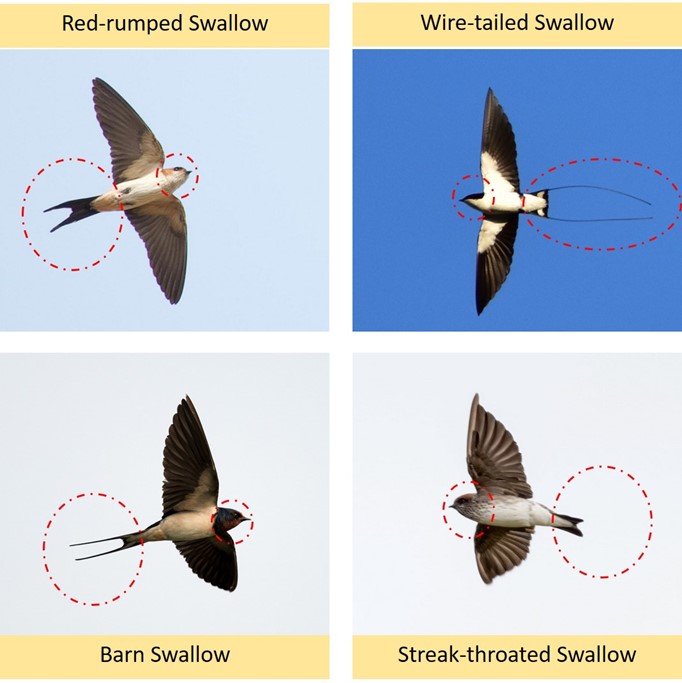
Key identifying features for swallows in flight. All images (clockwise from top left) © Shehnaz K.A, Harish Dobhal, Kakul Paul, Kamal Hari Menon and Macaulay Library.
Other important features that may be visible in flight are white spots on the tail of Barn Swallow (absent in the others), and red on the cheeks of Red-rumped.
And finally, as with most bird species, these four swallow species have distinctive calls! Acquaint yourselves with the calls and you may not even need to look up to ID these swallows 🙂 See here for more photos and sounds.
Header Image: Wire-tailed Swallow Hirundo smithii © Raghavendra Pai/ Macaulay Library


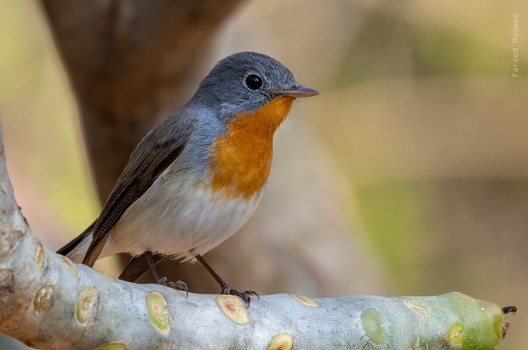
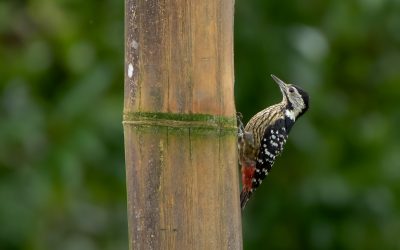
Excellent
Very informative indeed!
Excellent information! Thank you guys!
Thank you for the information. Really helpful.
This excellent article definitely cleared my confusion with Swallows, thank you for elaborating the minute yet visible differences.
Excellent article. Highly articulated.
Awesome! Needed this!
Thank you everyone. Glad you liked the article.
very well distinguished. thanks for your time and clarity of presentation.
Excellent information. Thanks.
People should do a play with different people playing different species of birds and the stories need to be broadcasted to the audience just so that every child should know these precious gifts of Nature
This seems like an amazing idea!
Very use full information
Super helpful! Thankyou!
In technical works only I have seen similar down-to-earth explanations. But these explanations have NO comparisons.
As per below 1 Comment I read – I’m also now getting clear of doubts – specifically CORRECTING MISTAKES
This is a good starting point for beginners like me and will start to read similar articles to learn.